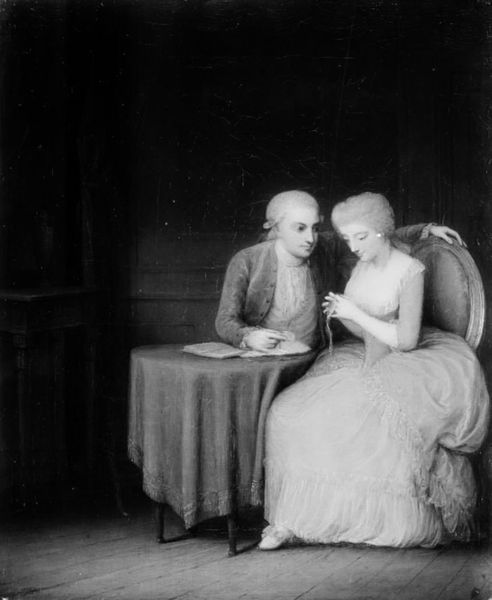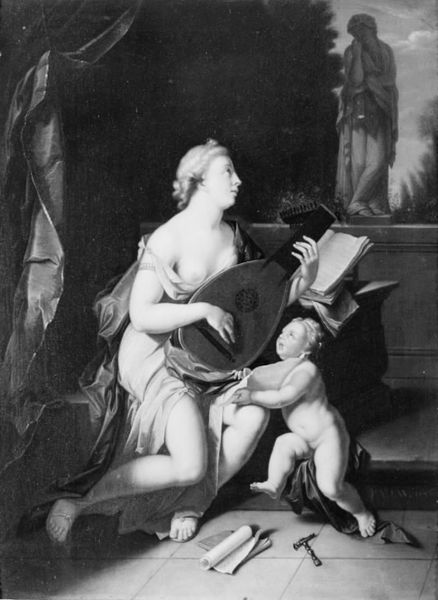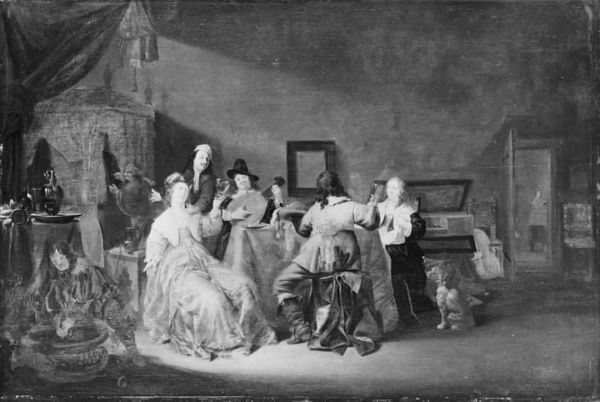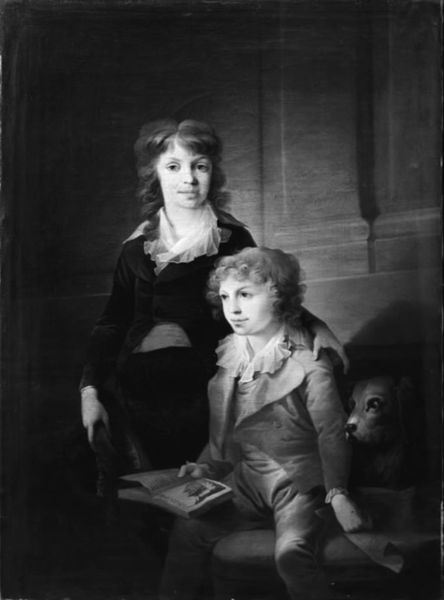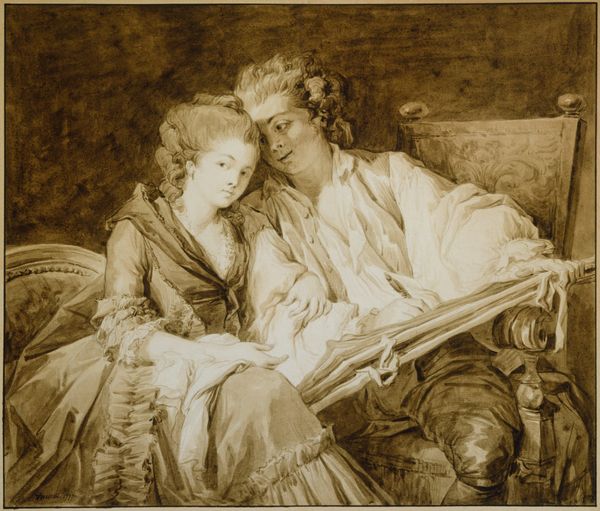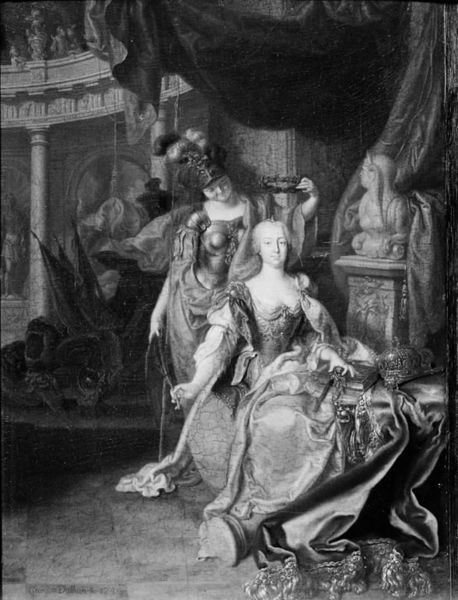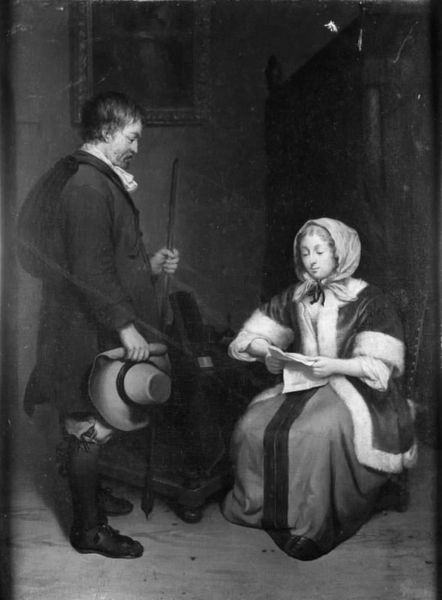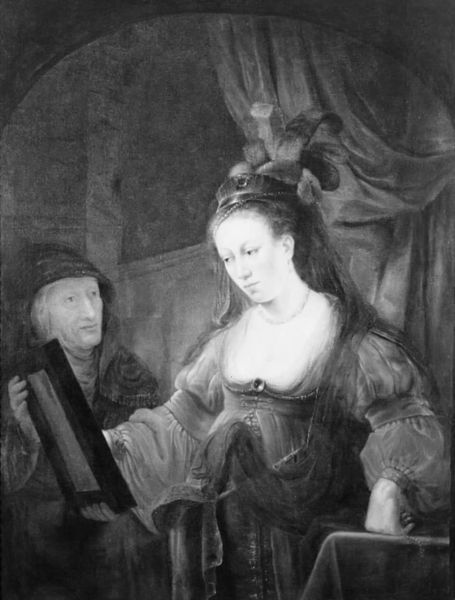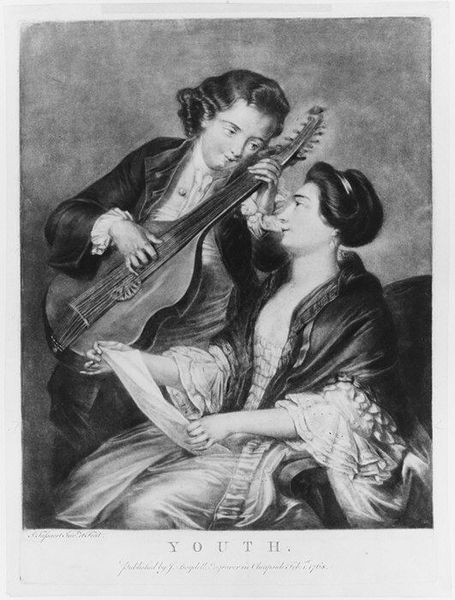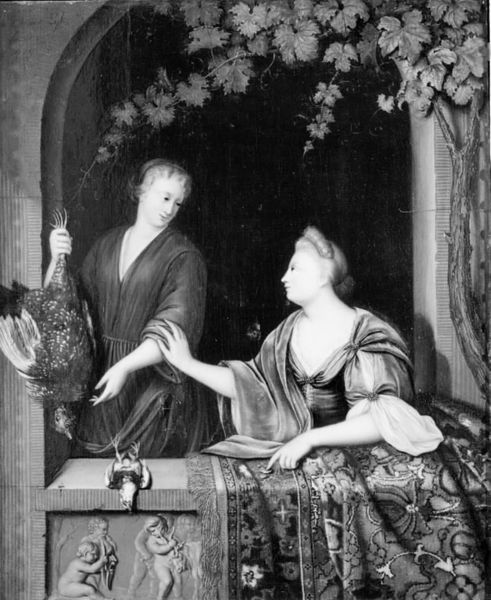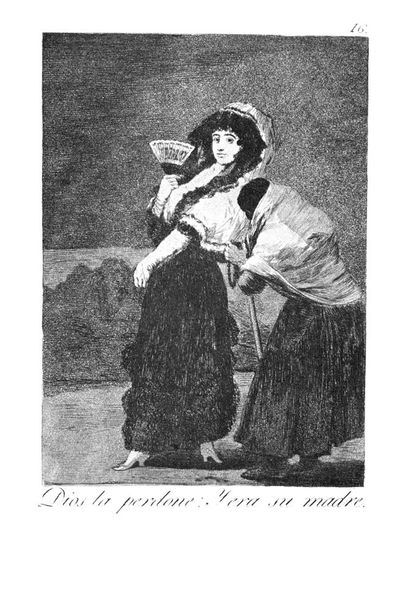
painting, oil-paint, canvas
#
portrait
#
neoclacissism
#
portrait image
#
painting
#
oil-paint
#
canvas
#
intimism
#
romanticism
#
genre-painting
Dimensions: 37 cm (height) x 29.5 cm (width) (Netto)
Editor: Here we have Jens Juel's "Peder Anker med hustru og datter," created in 1792 using oil paint on canvas. It has such a formal yet intimate feeling. What jumps out at you when you look at this painting? Curator: Well, I am immediately drawn to the materials and how they reflect the social and economic context. Juel used expensive pigments and canvas. What does that tell us about the subjects? The texture of the clothing, painstakingly rendered, emphasizes wealth. The paper that Anker is holding -- consider its physical properties as a manufactured product and what its presence says about literacy and access to information. Editor: That’s interesting. So the painting becomes more than just a portrait; it’s about access and power expressed through materiality. The detail on the fabric alone must have taken considerable time and skill. Curator: Exactly! The labor involved in producing not just the painting, but also everything depicted *within* it, speaks volumes. Think about the production of those textiles, the mining for pigments... These are all part of the bigger picture. Do you notice the subdued colour palette, almost as if the canvas was scarce and the paints measured? Editor: I do now! It makes me wonder about the social status of artists like Juel. Was he seen as a craftsman, or did his use of these materials elevate his standing? Curator: Good question. The very act of transforming raw materials into something of aesthetic value, something that signifies status, blurs those boundaries. The commissioning of such a piece shows an intentional participation in a visual culture deeply rooted in social hierarchy. We see the materials almost acting as agents here. Editor: It’s fascinating to consider how materials, labor, and class intersect in a work like this. It definitely changes how I view portraits in general. Curator: Indeed! And it moves us away from simply appreciating its aesthetic beauty, encouraging a critical engagement with its broader social and economic implications.
Comments
No comments
Be the first to comment and join the conversation on the ultimate creative platform.
